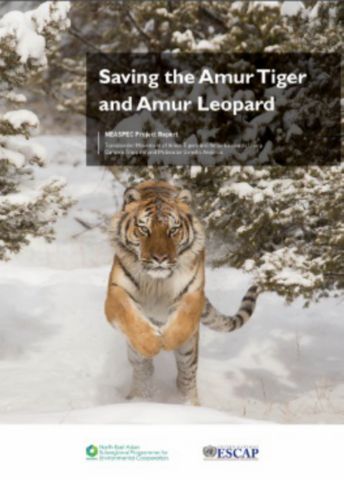On October 25, a research paper entitledStudy on the Cross-border Movement of Tigers and Leopards in Northeast China Based on Automatic Camera Monitoring and Molecular Genetic Analysiswas jointly submitted by the Feline Research Center of National Forestry and Grassland Administration and the Russian Far East Office of World Wildlife Fund (WWF) and officially released on the website of the United Nations Economic and Social Commission for Asia and the Pacific (ESCAP).
ESCAP is one of the five regional committees under the Economic and Social Council of the UN and the earliest and most representative intergovernmental multilateral economic and social development organization in the Asia-Pacific region. In 2014, under the overall coordination of ESCAP and the approval and support of the former State Forestry Administration, the research team of the Feline Research Center of National Forestry and Grassland Administration formed an international team of experts with the Russian Leopard Park, the Russian Academy of Sciences, and the Russian Far East Office. They conducted cross-border research in the fields of population ecology and conservation genetics of the tigers and leopards in Northeast China. After four years of hard work, under the great attention given by the competent authorities of the two countries and the cooperation of all the experts, the project has achieved fruitful results and is officially released to the world. This is an important achievement of the joint study of the Northeast tigers and leopards both in China and Russia. The project reveals important research results such as the population status and distribution, genetic characteristics and diffusion laws of the Northeast tigers and leopards on the Sino-Russian border.
The research results show that during the period of 2013-2015, 45 adult tigers and 89 adult leopards were discovered by automatic camera monitoring technology in Laoyeling Mountain and the adjacent Russian Leopard Park. Among them, 42% of the tigers and 17% of the leopards had frequent cross-border activities. The project found the basic migration paths and activity rules of the Northeast tiger and leopardin the Sino-Russian border, and provides an important scientific basis for the construction of the international corridor and the domestic corridor of their migration.
In addition, during the research, the project team realized the exchange of experts and postgraduate students from both countries, effectively improving their joint technical research capacity, which was also a successful example of the cross-border cooperation research of NEFU. It has laid an important foundation for the two countries to carry out more precise protection of the Northeast tigers and leopards. The latest research results of the project have made important contributions to the protection and research of the world's most endangered large felines. Moreover, the project is also a concrete measure for the joint international action of the Chinese and Russian governments to achieve a goal of “Double the Manchurian Tiger Population by the Next Chinese Tiger Year”. The project received strong support from the Protection Department of the former State Forestry Administration, the World Wildlife Fund (WWF), and the protected areas and of Forestry Administration of both Jilin and Heilongjiang Province.
The website of the report:
http://www.neaspec.org/sites/default/files//UNESCAP_Amur%20Tiger%26Leopard.pdf
